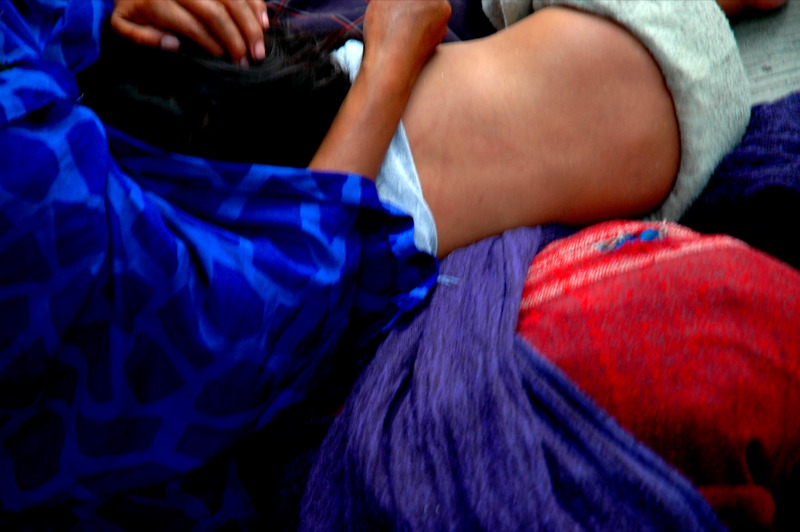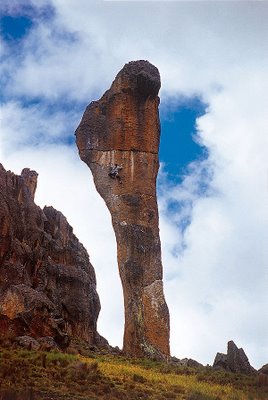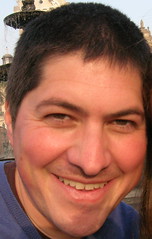5.27.2006
A lake with a view
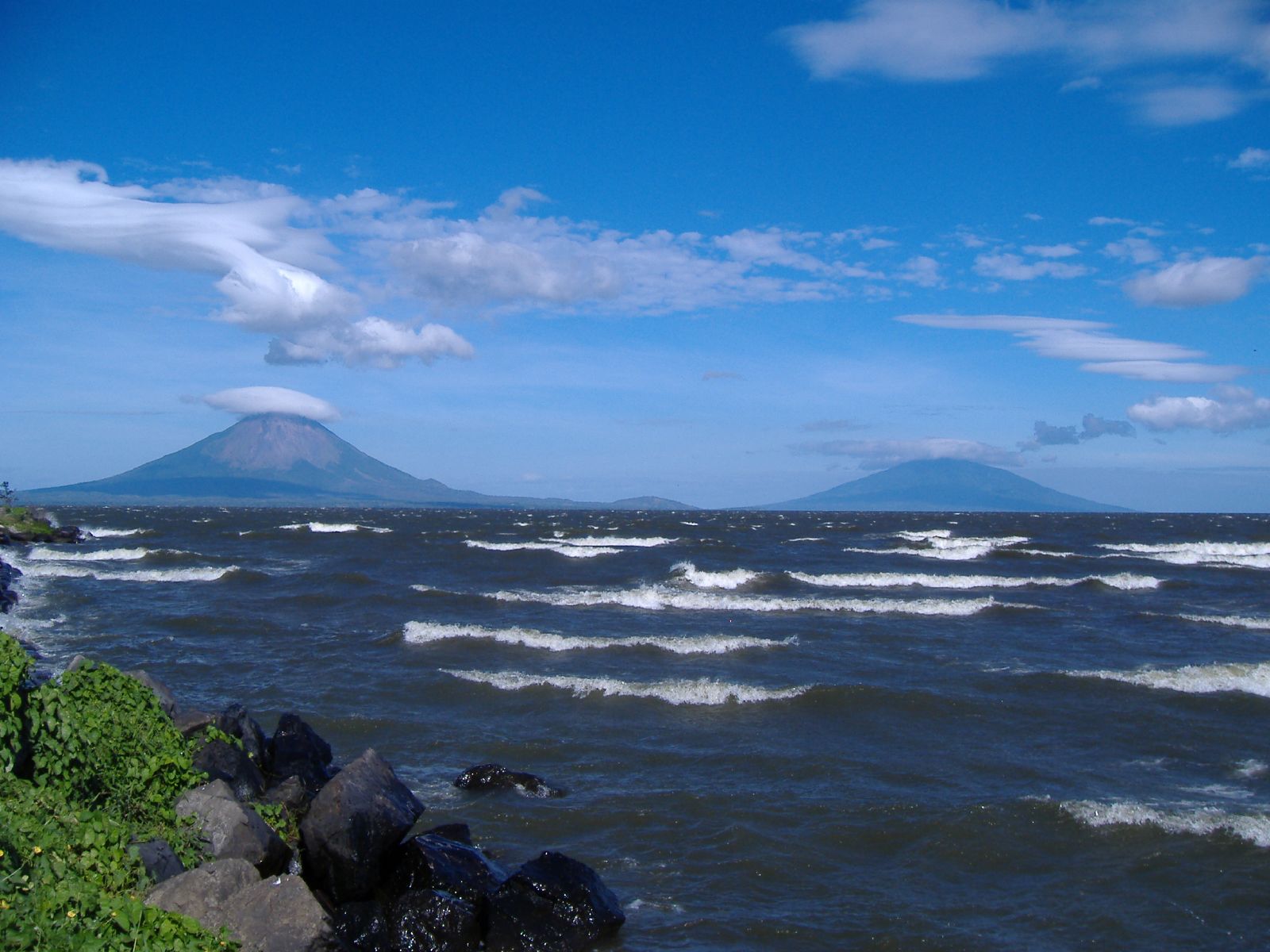
The shores of Lake Nicaragua, with a view toward Ometepe Island, home to the volcanoes Concepción (left) and Maderas. Photo by Don Pablo.
5.26.2006
Was your skull purposely deformed...
or are you just happy to see me?
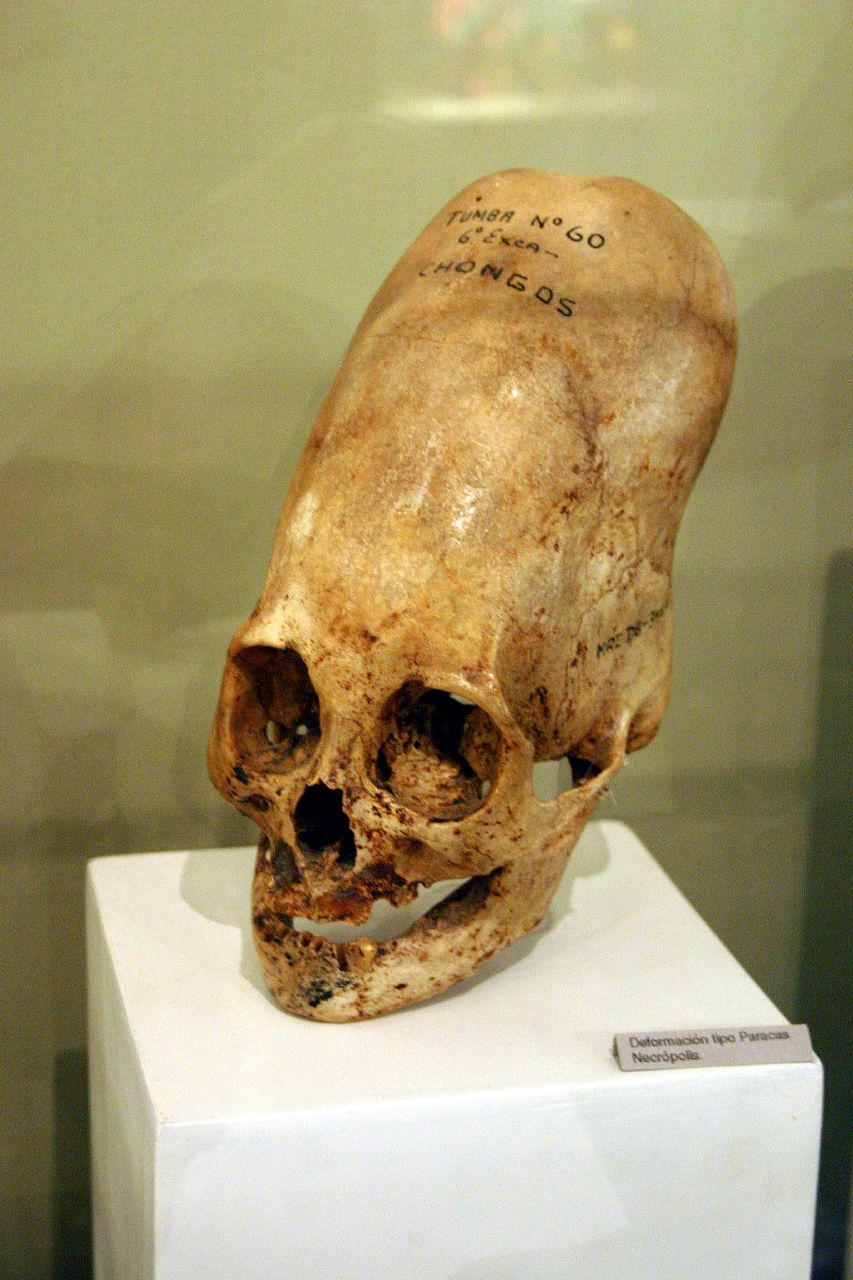
Archeologists believe that in Peru's ancient Paracas culture (750BCE-100CE), an elongated skull was a sign of nobility. Photo by Brian Ritchie
Tags: Paracas, Peru, skull, deformities, Paracas Necropolis, archaeology
Be your own Juan Valdez
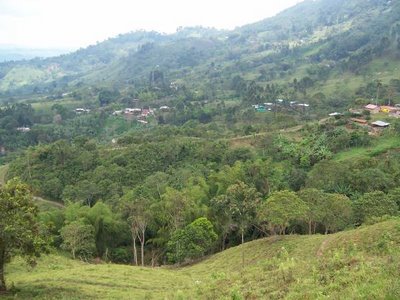
For sale in Quindío, Colombia: 36 acres of soil that will grow anything.
The ever-entertaining world real estate site, Viviun, features some acreage available in the heart of Colombia's coffee country. Asking Price: $155,000-$185,000. Personally, I wouldn't be able to resist growing chili peppers.
Tags: Colombia, Calarca, Quindio, land, real estate, coffee, viviun.com
5.25.2006
High on Peru
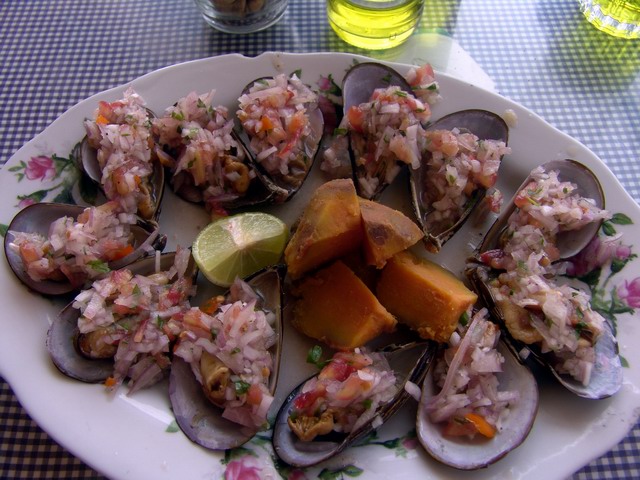
Choros a la chalaca (mussels marinated in lime juice) is typical eats on the coast of Peru.
Highlights from a recent Washington Post article by Walter Nicholls on Peruvian cooking...
High on PeruRead the full article (registration required).
With Its Mix of Worldly Flavors, the Country's Cuisine Could Be the Next Thai
Take one part Incan and one part Spanish. Mix well. Add influences of African, Chinese, Japanese and Italian. What do you get? Peruvian -- the cuisine that legendary French chef and culinary writer Auguste Escoffier called one of the best in the world -- after only French and Chinese. Considering its status, it's also a cuisine that has been relatively overlooked. Until now.
Alejandro Riveros, head of public diplomacy for the Embassy of Peru, has made it his mission to promote the sophistication, innovation and most importantly, taste, of foods from back home. [snip] Riveros believes Peruvian food is unique because "of the more than 100 climate zones in the world, we have 84." Peru has "every different ecosystem, from desert to jungle to snow-capped peaks and down to the sea where the cold currents from the South Pole are great for seafood."
The staples of Peruvian cuisine -- potatoes, yucca, corn and chili peppers -- were provided by the Incas centuries ago. Spanish conquistadors who arrived in the 16th century brought citrus fruit, wheat, rice, cattle and pigs as well as European-style desserts. Africans introduced spicy, vinegar-marinated beef and fish on skewers.
Then came the Chinese, who came to build railroads. They introduced soy sauce and fresh ginger as well as stir-fry cooking. Japanese arriving in the early 1900s to work on sugar and cotton plantations brought their love of seafood and techniques for preparing it simply and beautifully.
Tags: Peru, cuisine, cooking, cocina peruana, Incas, African, Chinese, Japanese, Italian, Auguste Escoffier, Alejandro Riveros, Embassy of Peru, potatoes, corn yucca, chili peppers, Pisco Sour
5.23.2006
A rousing game of...frog
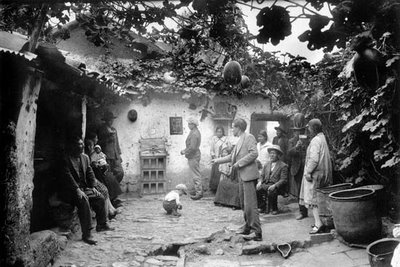
Playing Sapo at a Chicheria, Cusco, 1932. Photo by Martin Chambi.
In Latin America they call it Sapo, or frog. It goes by other names in Europe, where it most likely originated, despite some elaborate Peruvian legends that involve Inca nobilty throwing gold coins into Lake Titicaca to court the favor of magical frogs.
The game is simple, surprisingly fun (more so if it involves beer). You take turns tossing brass medallions at an upright wooden chest with open slots along the front. Only on top of the chest are a series of holes, as well as a brass frog. Get your coin in the frog's mouth and you win big points. Getting your coin in one of the holes and you score according to the hole your coin dropped in.
For Peruvians who long for the drunken Sapo games of their youth, Sapo Miami imports and sells Sapo sets for $75 to $200.
Tags: Sapo, Mesa de tira de sapo, game, juego de sapo, Peru, Europe, Incas, Titicaca, Martin Chambi
5.19.2006
5.17.2006
Mummy dearest
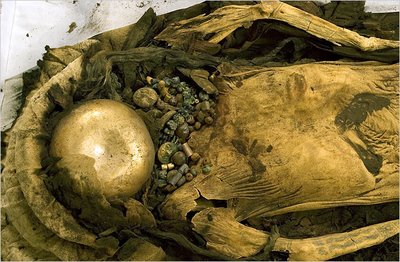
This recently discovered female mummy (found with a gold bowl covering her face) has archeological tongues a waggin'. Photo by Ira Block, National Geographic.
There seems to be no end to the bizarre archaeological finds in Peru. Reuters broke this story yesterday, but there were no decent pictures, so I hesitated to blog it. But now that the NY Times is all over it -- pictures be damned -- I gotta post it.
It seems they've discovered the mummified, tattooed remains of an elite woman of the Moche culture. They believe the find is some 1,500 years old.
Finding the lavishly appointed tomb of a Moche leader is certainly a great find, but it's not unheard of. No, what's got the archeological world buzzing is that she's female. What's more, she was buried with some serious weaponry, including two ceremonial war clubs and 28 spear throwers -- which suggests that she not only was a leader of some kind but a warrior to boot. Until now, most experts agreed that the Moche culture, which thrived from 100 to 800 CE, was run by men -- a sort of Precolombian, he-man woman-haters club.
Tags: Mummy, Moche, Peru, Huaca Cao Viejo, Lady of Cao, Reuters, New York Times, archaeology
5.16.2006
Salt cod, pig snoots and cane liquor
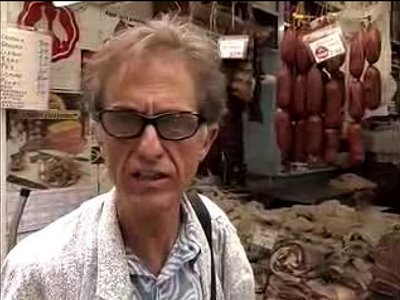
Musician and filmaker Toni Nogueira stars in his own whirlwind tour of the Sao Paolo's central market, where, if you can imagine it, they're selling it.
View his short video (runtime 2:44) at TurnHere.com.
Tags: Toni Nogueira, Sao Paolo, Brazil, central market, Feijoada, cachaça, bacalhau, turnhere.com
Disposable legislatures and malleable constitutions
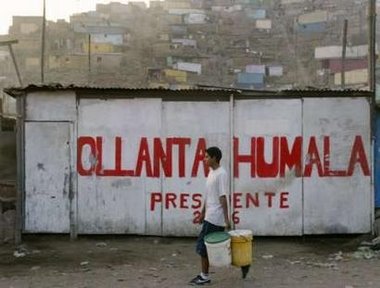
Sounds like some bad medical condition. Perhaps it is.
As the powers of our own U.S. Congress are being weakened by executive power grab (not to mention willful acquiescence), I find it interesting that legislative bodies are also seen as expendible in other parts of the world. This from a recent Reuters article comparing the presidential candidates in Peru's coming runoff election:
- (Ollanta) Humala aims to close Congress and set up a constituent assembly to write a new constitution to increase the role of the state in Peru's economy and redistribute more wealth to the poor.
- (Alan) Garcia wants to restore Congress to a bicameral legislature and might close Congress if lawmakers refuse to lower their salaries. [my itals]
Tags: Peru, Ollanta Humala, Alan Garcia, election, runoff, Reuters, U.S. Congress
5.13.2006
Caballitos de Tortora

Fishermen in Huanchaco, Peru, bring in their "caballito," an ancient-style fishing boat made from bundles of tortora reeds. Photo courtesy of Manuel Ñique Alvarez and Jorge Vidal Fernandez.
Cristina DiRaimo visited Huanchaco, Peru, in 2002 as a sophomore Anthropology student from Utah State University. She spent many hours with Armando Ucanan Gonzales, a 21-year-old fisherman who fishes just as his ancestors have for nearly two millennia. In her ethnography, she describes a typical day for Armando:
Armando Ucanan Gonzales wakes up at 5 a.m., gathers his fishing line, bait and nets and walks barefoot down to the beach from his small white home in Huanchaco, Peru. His boat, a Caballito de Totora (little reed horse) waits for him leaning against the white breaker wall that divides the town from the Pacific Ocean. Armando lifts the heavy boat onto his right shoulder and walks (slightly hindered) down to the edge of the ocean. He puts his small fishing net, anchor (just a large rock attached to a rope), fishing tackle and bait into the back of his boat. Then he pulls the bow of the boat into the surf...Christina's ethnography also includes Armando's recollections about learning to fish as a little boy and his realization that, as the last young fisherman in Huanchaco, he will end nearly 2,000 years of tradition when he quits fishing to go to college. It's an interesting read, especially if you've been to the north coast of Peru and have seen the fishermen head out into the icy waters astride these strange little craft.
Tags: Huanchaco, Peru, caballito de tortora, caballito del mar, fishermen, Christina DiRaimo, anthropology, Utah State University, Armando Ucanan Gonzales, Moche, ethnography.
5.09.2006
Would you say that I have a plethora of piñatas?

Stereograph of Pancho Villa, courtesy Postcards of the Mexican Revolution
Tags: Pancho Villa, Mexico, Mexican Revolution, postcards, stereograph
Crazy gringos

Members of the Tangaroa expedition team set sail on a wooden raft at the start of their expedition in the port of Callao in Lima April 28, 2006. The Tangaroa expedition aims to recreate Thor Heyerdahl's Kon-Tiki voyage across the Pacific Ocean on a balsa raft in 1947, from Peru to Polynesia. The team, which includes Heyerdahl's grandson Olav, will launch the Tangaroa from Callao on Friday. REUTERS/Daniel Silva
Not that I woudn't enjoy being in on a project like this. And I kinda liked Grandpappy Heyerdahl, who launched all this craziness so many years ago. He had some interesting ideas and was willing to put his own money and well-being on the line in an effort to prove them. But you know the Latinos must be shaking their heads at some of the stuff we gringos do to amuse ourselves.
Tags: Tangaroa, expedition, Olav Heyerdahl, Thor Heyerdahl, Kon-Tiki, balsa raft, Callao, Polynesia
5.04.2006
"Hey folks, how about double or nothing?"

Alan Gabriel Ludwig García Pérez, President of Peru from 1985 to 1990. Reuters photo by Pilar Olivares.
Unbelievable. Where else but in Peru will people even contemplate bringing back a president who introduced the country to the horrors of hyperinflation? How bad was it? According to the Wikipedia entry on Garcia, he presided over a cumulative total of 2,200,200% inflation, between July 1985 and July 1990. Let's spell it out: that's two million, two hundred thousand, two hundred percent.
This guy just might deserve the title of "Worst President Ever," but that title's been taken.
Tags: Alan Garcia, Peru, election, hyperinflation, inflation

